This company makes coffee into iPhone, allowing soulful coffee to "speak for itself."

For professional baristas, please follow the coffee workshop (Wechat official account cafe_style)
What's the first thing that comes to mind when it comes to coffee? There are all kinds of packaged instant coffee in the supermarket, Starbucks and Louisa in the roadside chain coffee shop, or hand-made black coffee in independent cafes with daily specials. As coffee goes deeper and deeper into people's daily life, the battle for boutique coffee brought about by the "third wave of coffee" has gradually begun.
Innovation: grind in 48 hours and use in 45 seconds. This company has turned coffee into a boutique, creating a "third wave of coffee".
Three key points of this paper are as follows: 1. The third wave of coffee, represented by Blue Bottle, has turned coffee from a refreshing drink to a delicacy. two。 Exquisite and exquisite! The "third wave of coffee" makes coffee a "boutique". 3. The boutique coffee war officially begins! Starbucks announced that he had joined the war.
1. The third wave of coffee, represented by Blue Bottle, has turned coffee from a refreshing drink to a delicacy.

(photo capture: beautimode)
The "third wave of coffee" is a milestone in the history of coffee, marking the transformation of coffee from a "refreshing" functional role to the most exquisite enjoyment. Among them, the American coffee shop chain Blue Bottle is the aesthetic representative of "coffee with soul" in this trend, and is known as "the Apple of the coffee industry".
Blue Bottle, founded in Oakland in 2011, is famous for not selling roasted coffee beans for more than 48 hours. James Freeman, the founder of Blue Bottle, is deeply influenced by the spirit of Japanese workers, paying attention to every detail from the quality and flavor of coffee to roasting and packaging, believing that each cup of coffee has its own "soul".
In each branch, Blue Bottle insists on using self-selected and roasted coffee beans, which are flushed to customers by professional baristas, and stipulates that coffee powder must be used within 45 seconds after grinding to show the freshest flavor. The reason why it is stipulated that roasted coffee beans will not be sold for more than 48 hours is to allow customers to get the freshest coffee and drink it at the best time.
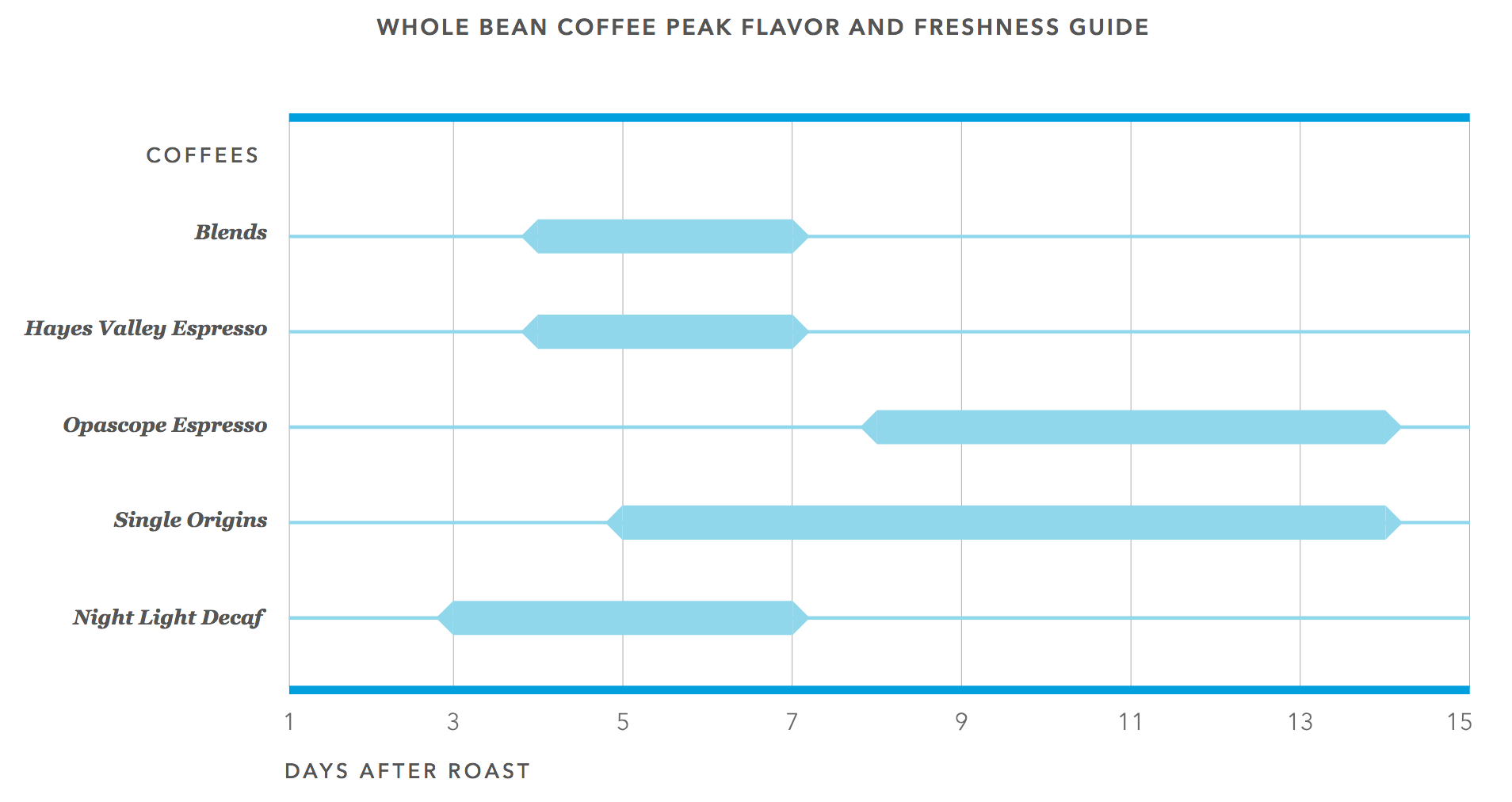
Picture shows: Blue Bottle provides customers with the best coffee taste interval table (photo capture: bluebottlecoffee)
The success of Blue Bottle and the third wave of coffee depends on the first and second waves of coffee, laying the groundwork for today's boutique coffee. The first wave of coffee can be traced back to when coffee business opportunities began to sprout in the 1800s and peaked in the 1960s. This trend has popularized coffee and appeared on the table of American families in the form of instant coffee. The coffee in this period is characterized by "convenience" and "drink as soon as you go", paying less attention to the quality of coffee and taking "convenience" as the main demand.
Out of dissatisfaction with the first wave of coffee at the expense of quality, the second wave of coffee began in the 1960s to pay more and more attention to the flavor and way of making coffee, and coffee shop chains such as Starbucks also took advantage of this trend. Coffee during this period used high-quality coffee beans, heavy roasting techniques, and a variety of seasonings (milk, syrup, chocolate, etc.), which enhanced the texture and diversity of coffee.
two。 Exquisite and exquisite! The "third wave of coffee" makes coffee a "boutique".
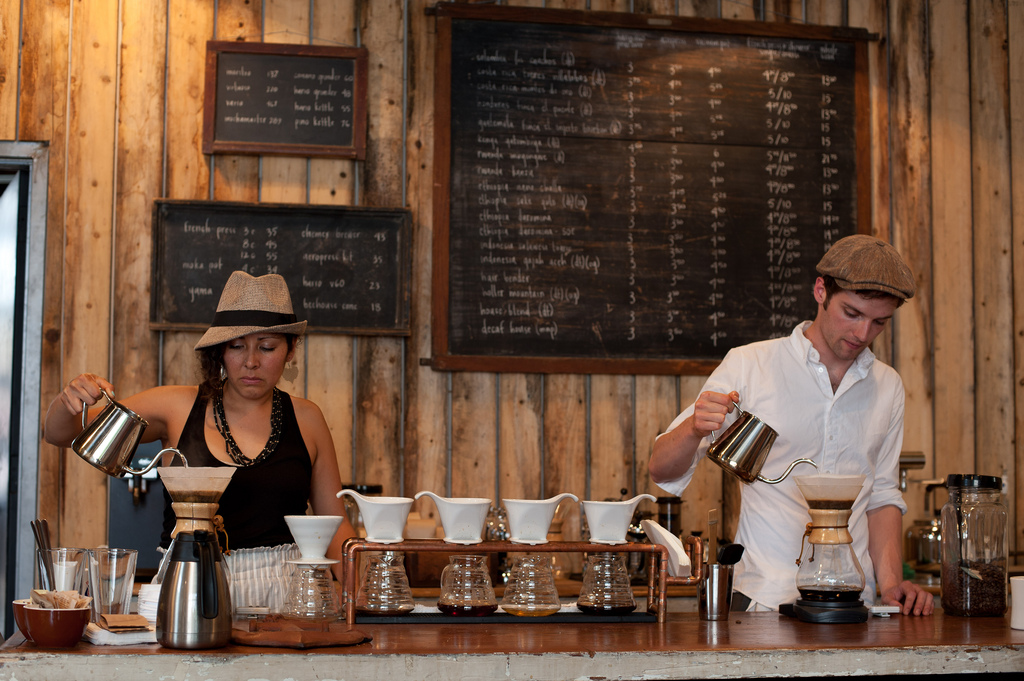
(photo source: Flickr)
After the first two waves, consumers have higher expectations for the quality of coffee, which also contributed to the birth of the "third wave of coffee". Compared with the second wave of coffee, which only uses "producing country" to describe the flavor of coffee, the "third wave of coffee" goes further, requiring coffee varieties, manors, elevations, climate, planting methods, production methods and roasting degree, and establish a set of evaluation criteria. In this way, the strict requirements for each link let these boutique coffee have their own "resume", as exquisite as red wine.
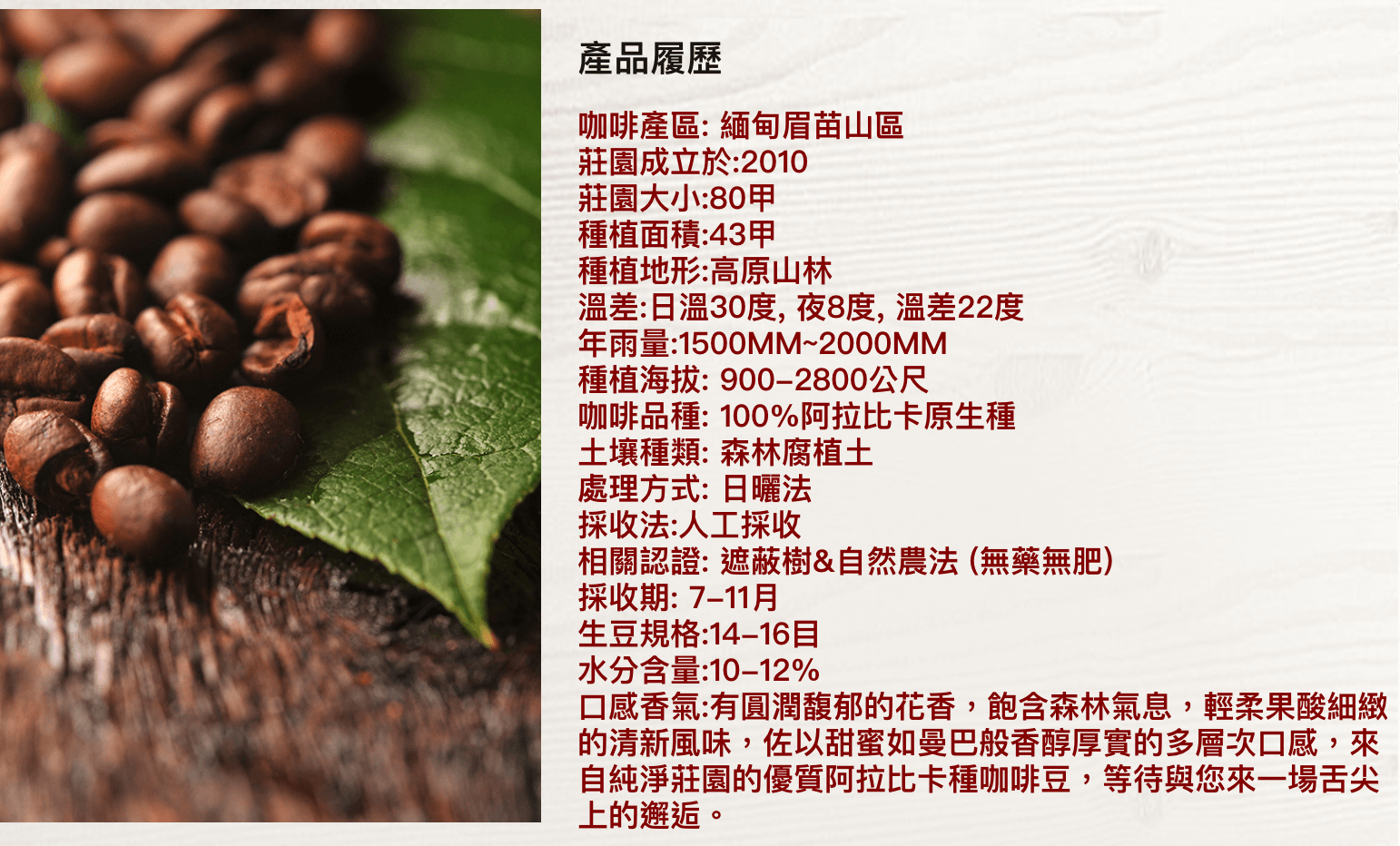
Photo description: many boutique coffees have their own "product resumes" (photo capture: naturallife-tsc)
In addition, the "third wave of coffee" attaches great importance to social care and sustainable development. Break through the traditional transaction mode of middleman and adopt the "direct trade" (direct trade) mode between shopkeepers and coffee farmers, which not only keeps small farmers from being exploited, but also realizes the ideal of transparent production and transaction process.
Another third wave of coffee trend represents the brand Intelligentsia, which is the pioneer of direct trade in the coffee industry. Intelligentsia deals directly with coffee farmers to ensure the quality of coffee beans and to ensure a reasonable purchase price for farmers. The "third wave of coffee" also pays attention to the balance between environment and business: organic planting, drip irrigation, peel drying and other different methods can not only make the coffee more layered in taste, but also more friendly to the local environment.
Most of the boutique coffee is presented in the form of black coffee, with the removal of cream, syrup and other additives that will affect the flavor, advocating "let the coffee speak for itself" and presenting the spirit of individual manors in the purest way. In the way of baking, emphasize "medium and shallow roasting", which is different from the coke aroma brought by heavy baking in the past, and pay attention to tasting the flower and fruit aroma of coffee itself.
3. The boutique coffee war officially begins! Starbucks announces joining the war
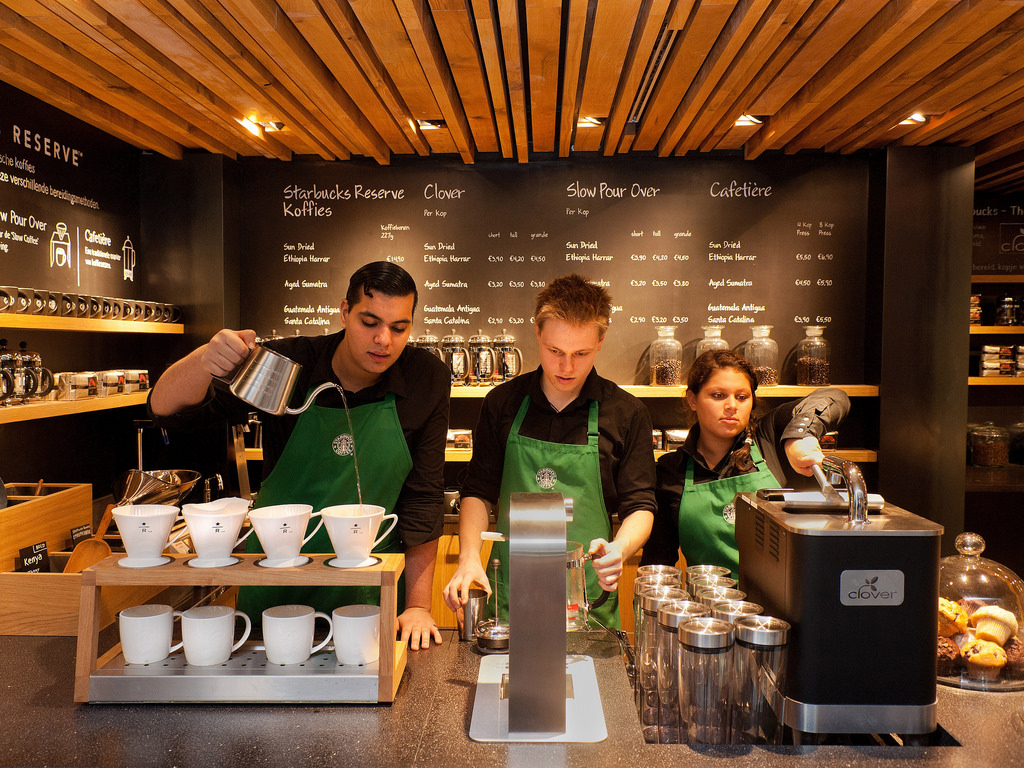
(photo source: Flickr)
Blue Bottle has more than 25 stores in the United States, and officially entered the Japanese coffee market in 2015. So far, it has opened six stores in Japan. Intelligentsia also has more than ten stores in the United States and continues to expand.
In an effort to keep these brands from being prettier, Starbucks plans to open new Reserve Coffee areas in 1000 stores in the United States in 2017 to keep up with the third wave of coffee. Through the more advanced raw materials-excellent quality, rare production, unique flavor of classic coffee beans and hand-brewed way, in an attempt to promote Starbucks to the top boutique coffee market. The CEO of Starbucks said that what is special about the stored coffee is that "we don't try to control the taste of the coffee, but to explore the nature of the beans and show their best flavor." In addition to opening more coffee collection areas in existing stores, Starbucks also plans to set up 1000 collection cafes that sell only classic coffee, but the date has not yet been set.
From the "refreshing function" and "convenient and fast" features of the first wave, the product positioning of the second wave of "multiple flavors" and "social leisure", to the third wave of boutique coffee that focuses on "expressing the spirit of the manor", we can see that as long as we cut in from the characteristics that we have never thought of in the past and create our own unique market positioning, even if the coffee market seems to be saturated, it can also create new business opportunities.
Important Notice :
前街咖啡 FrontStreet Coffee has moved to new addredd:
FrontStreet Coffee Address: 315,Donghua East Road,GuangZhou
Tel:020 38364473
- Prev
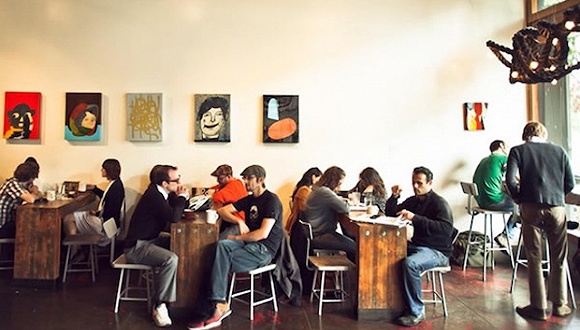
The coffee shop pays more attention to the experience, from baking to brewing, let you do it yourself.
Professional baristas Please follow the Coffee Workshop (Wechat official account cafe_style) from the 19th century instant coffee was popular, to the end of the last century Starbucks put forward the concept of coffee shop is the third space, and now people have ushered in the third wave of the coffee industry. Boutique coffee is becoming more and more popular, and one sign is sprouting: coffee shops are paying more and more attention to experience, and consumers are no longer just walking into
- Next
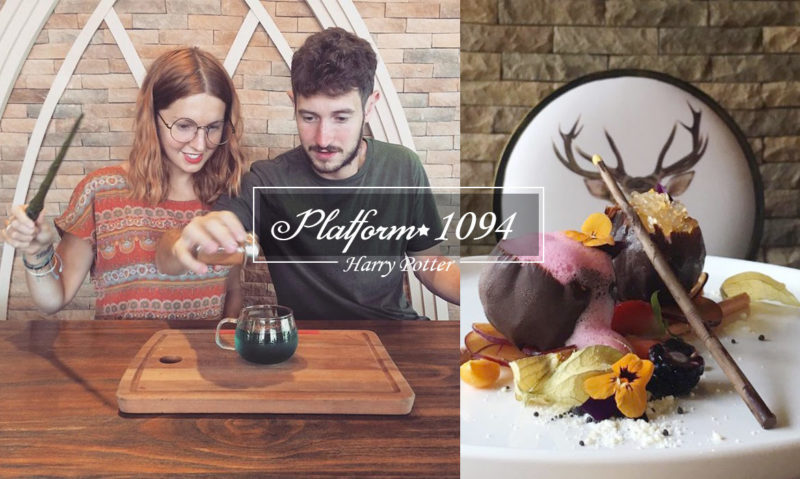
Let people fall into the "Harry Potter" coffee shop in the fantasy world.
Professional baristas please follow the coffee workshop (Wechat official account cafe_style) I believe many people are very curious about the magical kingdom in the novel "Harry Potter Harry Potter". It has been exactly 20 years since the first Harry Potter and the Sorcerer's Stone was published. It has also cultivated many loyal fans, which has spawned many pictures all over the world.
Related
- What documents do you need to go through to open a coffee shop? coffee shop coffee shop certificate processing process
- How to purchase Coffee beans in small Cafe how to choose a suitable supplier for domestic Coffee supply Company
- How to drink Starbucks Fragrance White Coffee? how to make Australian White Coffee? what Italian coffee beans are recommended?
- The Story of Flora Coffee: the name of Flora Coffee Bean and the implication of the Flowers on Florna Coffee
- How much does a cup of coffee cost? How much is the profit of a cup of coffee? What is the profit of the coffee shop in a year?
- Yunnan small Coffee, known as "fragrant Coffee", introduces the characteristics of Alpine Arabica Coffee producing areas in Yunnan, China
- 2023 latest Starbucks full menu price list how much is a cup of Starbucks coffee what is better to drink the most popular hot and cold drinks recommended
- Starbucks different kinds of Coffee Price list Starbucks menu 2023 Top Ten Best drinks in Starbucks
- Starbucks Spring praise Comprehensive matching Coffee Bean theme Story Packaging implication and taste description
- The cost of a cup of coffee latte American coffee cost price and selling price

